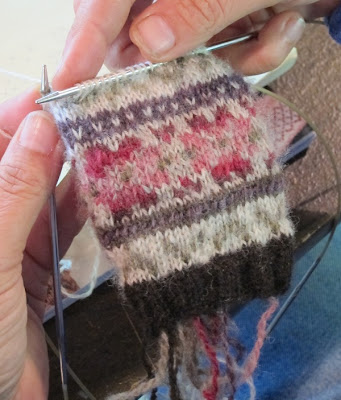Fair Isle for Handspinners Class
Elizabeth Johnston of Shetland and Martha Owen of North Carolina, recently visited the NW to teach traditional techniques for Fair Isle knitting. Elizabeth started the class by informing us that it was not a dye class or a spinning class or a knitting class, but rather a color class...and off we went!
 |
| Two dyed locks of Shetland fleece just out of the dye pot. |
 |
| Holding the lock firmly in your hand, the end with the break needs to be pulled off at the rise area or break in the fleece before it is ready to work with. |
 |
| Dyed locks that have had the ends pulled off at the break or rise location. |
 |
| Elizabeth Johnston demonstrates the use of the drum carder for color blending as well as for creating a lofty, woolen style yarn. |
 |
| Student Denise Mor with her dyed fleece and carded rolags ready for spinning. |
 |
| Denise's spun yarn ready to be knit into a traditional Fair Isle pattern. |
 |
| One of 'Fair Isle for Handspinners' students knitting in progress. |
 |
| A finished project on top of the raw Shetland locks that the class started with. |
I'm looking forward to working with the wonderful stash of dyed and undyed fleece that I came home with after this class.




